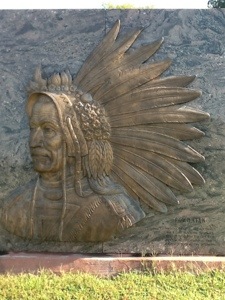“Over the years, we have lost much of our land to greed as other people have taken our resources. Now, with this reservoir, people want to take our river as well.”
–Assistant Chief Carl Custalow (Mattaponi), Bay Journal, May 2003
Speaking with Ashley and her Grandfather at the Pamunkey Reservation supplied me with a wealth of knowledge, even in such a short time frame. It is somewhat distressing to think of all the struggles these people experienced throughout the generations. One of the most devastating factors is loss of resources; this includes losing their tribal lands and destruction of aquatic ecosystems. Ashley, director of the Pamunkey Reservation Museum, explained a recent threat to the river: potential dam development upriver. This would have displaced thousands of acres of wetlands. Luckily, environmental activists assisted in the eradication of this plan, which had a greater impact on aborting the plan than the reservation had. The river has been an important part of the Pamunkey tribe for generations. Shad is the fish of choice, however this species has been placed under a moratorium as the population has declined over the years. The treaty signed by the Pamunkey people with the English government permits them to capture these fish, disregarding the moratorium. Their culture believes in giving back to the earth, and attempting to return or compensate for what resources they remove. In the case of Shad, the fishery satisfies the desire to replenish the resources they’re taking out of the river.

Source: Google Images: Pamunkey Fish Hatchery
Ashley’s grandfather largely participates in the fish hatchery, which is in operation each Spring when the Shad run is in full swing. The fish are caught with expansive drift nets, or gill nets, constructed from an acrylic-like substance, typically 250-300 feet long. From there, eggs are collected from the captured Shad, fertilized, and transferred to hatching jars, which each hold approximately three liters of eggs. Water is fed to tanks from the river via a gravity system, where the eggs will begin to hatch in approximately six days, and will then swim into large, circulating water tanks. These are released after approximately a week of growth, simply by removing the plug in the large tanks which empty into the river. This process began in 1918 “…to help Mother Nature to get a better run of fish”, as stated by Ashley’s grandfather. However, Ben Norman, a member of the Pamunkey tribe and an employee at the National Museum of the American Indian, had some information for us about the status of Shad: “In 2012, the Chesapeake Bay Foundation put out a report card of the different species in the Bay, and they gave Shad Fish an ‘F’. So even today the population is at a pretty big risk.” Norman also reminded us that the Pamunkey tribe is one of the only groups retaining the right to fish for Shad, which is puzzling, and almost contradicting. If the goal is to bring back the population, why would these people continue to capture this species? Why not adhere to the moratorium for a year or two in order to see if that assists the Shad run? Further, how much is the hatchery really helping? Is interfering with the natural spawning patterns, thus having a negative effect opposed to positively influencing the population? Which is benefitting more from this hatchery, the Pamunkey culture or the Shad population? While it is understandable that Shad is a part of their history and culture, it may be time to commit to a cultural shift in order to move on from the conflict of ethics.
